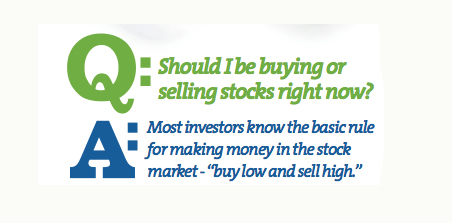BY: Bill and Cindi Porter, Aileron Investment Advisors
Unfortunately, many investors do just the opposite and achieve the opposite results. On March 24, 2000, the S&P 500 set a new record high (1527)* but few investors followed the rule by selling their shares and taking their profits. By Oct. 9, 2002, the S&P 500 had quickly fallen 49 percent (777)* and many scared investors “sold low.” The old rule dictates that the low point was the best time to buy – but few were buying.
Five years later on Oct. 9, 2007, the S&P 500 had risen 101 percent and it reached a new high (1565).* This was the optimum point to rebalance a portfolio by following the rule, “sell high” and actually realize profits. Until a stock or mutual fund is actually sold and repositioned, all current profits are merely “paper profits” and not yet truly realized gains. Many did not follow the rule and by March 9, 2009, their “unrealized gains” had dropped 57 percent to (677)* and once again many scared investors (instead of buying low) sold low.
On July 23, 2013 the S&P 500 had risen to a new high of 1692.* Unless you feel that things are “different this time,” the old rule would suggest that you might consider harvesting some of your profits by “selling high” and rebalancing your portfolio. Volatility dictates caution. During June 2013, of the 20 days of market trading, 16 days saw the Dow Jones swing up or down by more than 100 points.
The stock market may continue to go up for some time (or not). You might consider having a circumspect conversation with your financial advisor about the wisdom of the old rule – “buy low and sell high.”
Send us your investment questions to answer: info@ suwanee magazine.com
*Source: Standard and Poor’s

















